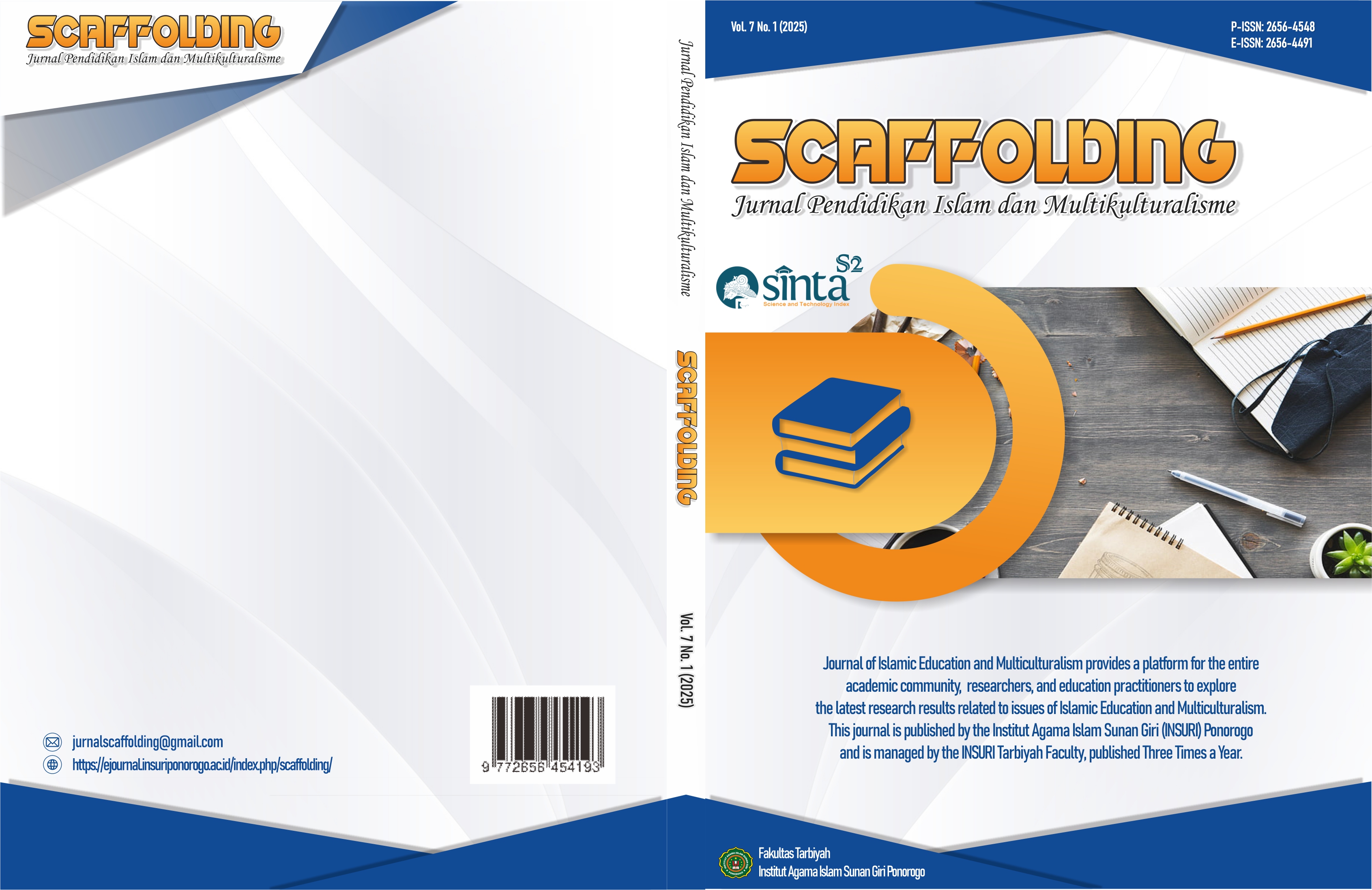Critical Education in Secondary School: Power Relations and National Identity Formation in Secondary Schools
DOI:
https://doi.org/10.37680/scaffolding.v7i1.7228Keywords:
Academic participation, curriculum, nationalism, power relationsAbstract
This study aims to analyze power relations in the educational practices at SMP Al Amanah, a junior high school located in Jeneponto Regency, South Sulawesi. The focus is on how decision-making structures and academic interactions shape—or hinder—the development of critical national consciousness among students. This research adopts a qualitative approach with a case study design. Using a descriptive-qualitative approach with a critical case study design, data were collected through participant observation, in-depth interviews with teachers, students, and school administrators, as well as document analysis, including curricula, syllabi, and school meeting notes. The data were analyzed using critical discourse analysis, framed by Antonio Gramsci’s theory of hegemony and Pierre Bourdieu’s concept of cultural capital. Findings reveal that structural dominance by the school principal in decision-making processes, coupled with a curriculum that emphasizes a national narrative without meaningful integration of local context, results in hierarchical power relations with minimal participation. This condition weakens the role of teachers as agents of change and limits students’ opportunities to engage critically in the learning process. Unequal distribution of cultural capital leads to the reproduction of a uniform and decontextualized discourse of nationhood, thereby weakening reflective national awareness. The study underscores the need for a more democratic decision-making structure within schools and the integration of local values into the curriculum to foster a participatory, contextual, and emancipatory civic education.
Downloads
Published
How to Cite
Issue
Section
License
Copyright (c) 2025 Ida Maiyanti A. Rajamuddin, Arbi Arbi, Syafiah Syafiah

This work is licensed under a Creative Commons Attribution-NonCommercial 4.0 International License.
Authors who publish with this journal agree to the following terms:
Authors retain copyright and grant the journal right of first publication with the work simultaneously licensed under a Creative Commons Attribution-NonCommercial 4.0 International License that allows others to share the work with an acknowledgement of the work's authorship and initial publication in this journal.
Authors are able to enter into separate, additional contractual arrangements for the non-exclusive distribution of the journal's published version of the work (e.g., post it to an institutional repository or publish it in a book), with an acknowledgement of its initial publication in this journal.
Authors are permitted and encouraged to post their work online (e.g., in institutional repositories or on their website) prior to and during the submission process, as it can lead to productive exchanges, as well as earlier and greater citation of published work.



